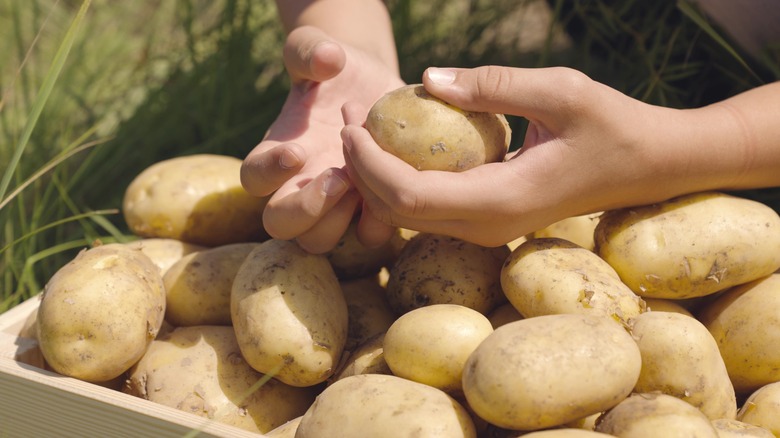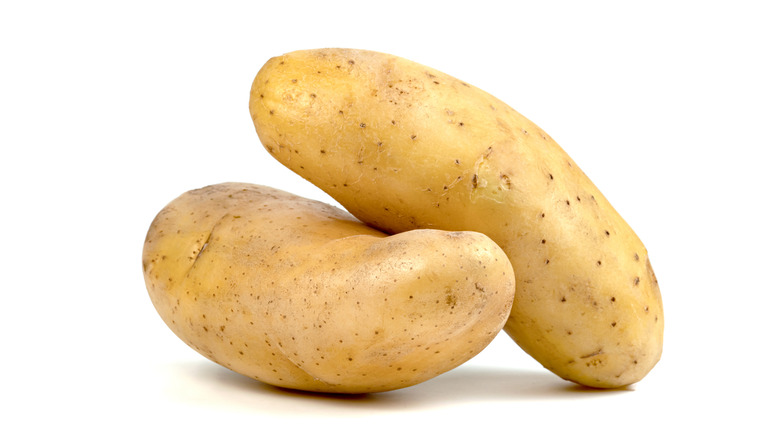How To Easily Pick Out 1 Pound Of Potatoes Without A Scale
If you live in the United States, Myanmar, or Liberia, you're weighing and measuring with a different system than the rest of the world, using the imperial measurements of feet, inches, cups, ounces, and pounds. One of the quirks of the imperial system is that the abbreviation for pound is lb, which comes from the Latin word libra (also used for the British monetary pound), according to The University of Nottingham.
When you're cooking in large quantities, recipes may call for pounds, especially for ingredients like potatoes. Say you're bringing the mashed potatoes for the entire extended family on Thanksgiving or you're in the mood to make a large amount of French fries, sometimes you need a whole lot of potatoes and you may not have a scale handy. Since potatoes are usually sold by the bag or by the unit, one great trick to have up your sleeve is knowing how to eyeball picking out a pound of potatoes.
Eyeballing a pound of potatoes
One pound of potatoes is not as many as you may think. According to The Kitchn, it only takes two white or Russet potatoes, each at a medium size that fits nicely into the palm of your hand, to equate to roughly one pound. If your recipe calls for different types of potatoes in various sizes, Grower Experts has a handy estimation of weight per potato size, no matter the variety. A small potato is about 1/5th of a pound, a medium-to-large potato is a 1/2 pound, and large potatoes come in just shy of a pound each. A good measure for serving size is about one medium-to-large potato per person.
In addition to being an affordable and filling food, potatoes pack a nutritional punch with vitamins B6 and C, as well as potassium and folate. All good reasons to pick out a few pounds of the tasty and nutritious spuds.

